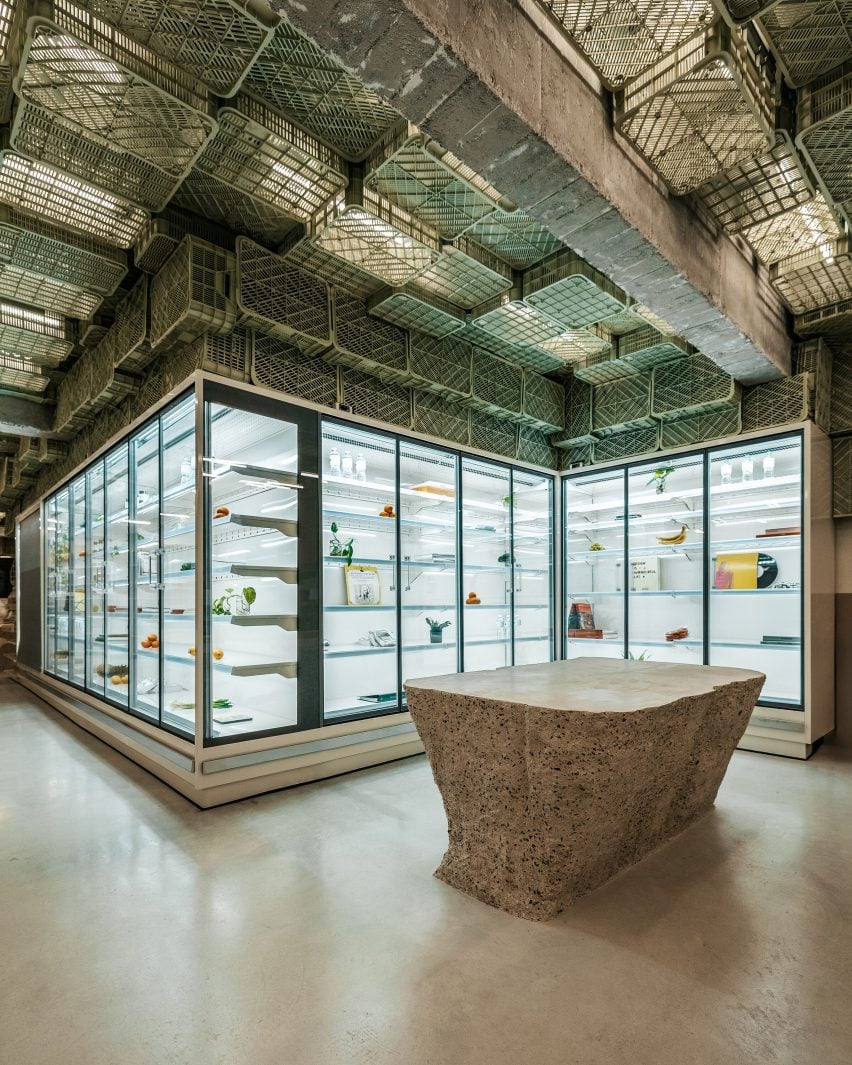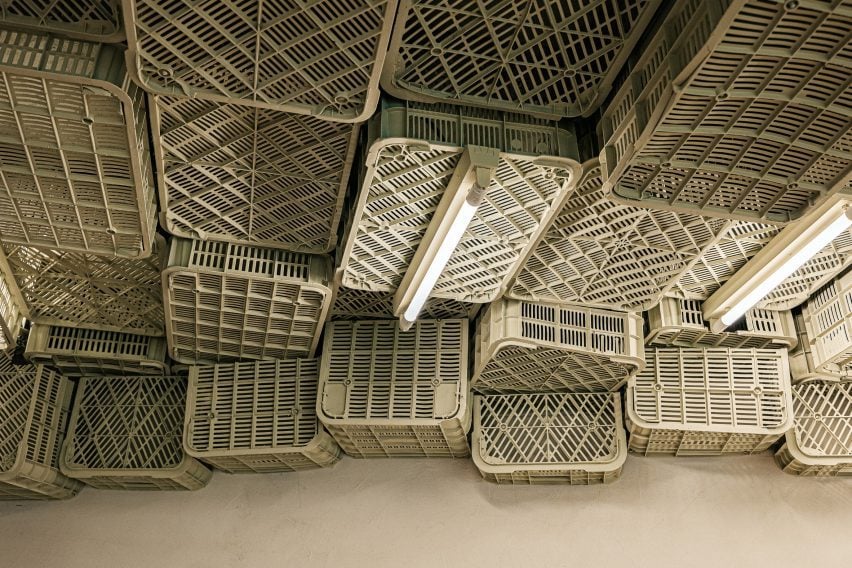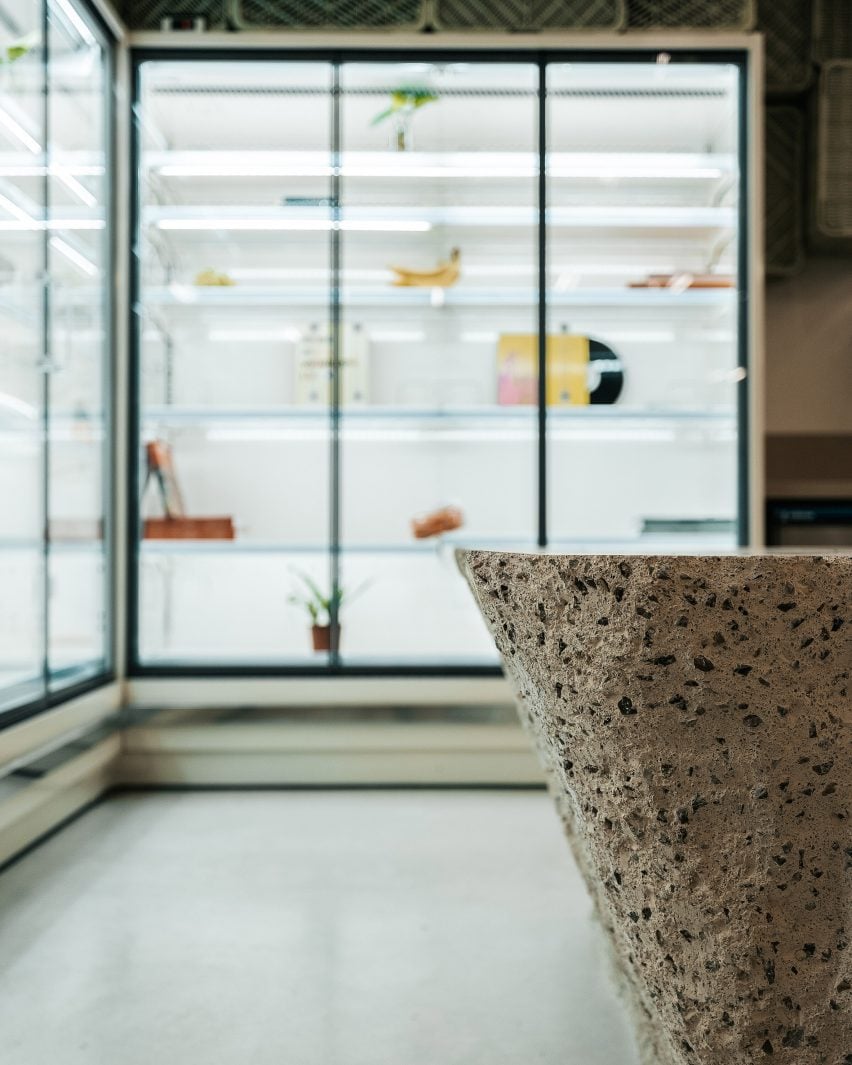Architecture practice Minimal Studio has unveiled Plastic Box, a supermarket in Mallorca with a minimalist exposed-concrete interior and a ceiling of 1,200 plastic crates.
The fully functioning store, located in Mallorca’s Port of Pollensa, was conceived by the studio as a “raw concrete envelope”.
“We reduced the structure to its essence, removing all previous finishes and exposing its raw bones,” Minimal Studio founder Juan David Martínez Jofre told Dezeen.
“The space was redefined through light, reflection, and rhythm, replacing traditional aisles with visual sequences that guide the visitor like an exhibition route,” Jofre continued. “The transformation stripped away every trace of commercial language – leaving only architecture, material, and light to tell the story.”

Minimal Studio also used concrete inside the 193-square-metre store, leaving walls and ceilings exposed and creating concrete tables and shelving.
“Concrete embodies control and truth,” Jofre said. “It anchors the space emotionally and visually, counterbalancing the volatility of plastic and the ephemerality of packaging.”

The studio complemented the exposed concrete with a range of other industrial materials.
“Alongside exposed concrete, we used stainless steel, translucent polycarbonate, and recycled plastic panels,” Jofre said.
“Each material was chosen for its ability to distort light and dissolve physical boundaries,” he added.
“Together, they construct an immersive atmosphere – reflective, industrial, and ethereal at once. The result is a hybrid environment: heavy in structure, yet light in perception.”

Minimal Studio used 1,200 recycled plastic crates to create a sculptural ceiling installation inside the Plastic Box. As well as forming an intriguing interior detail, the crates are practical – they house LED lighting, ventilation systems and rainwater collection devices.
“We sourced the crates from local food distribution networks – giving new life to discarded industrial elements,” Jofre explained.
“Once suspended and illuminated, they create a floating grid of reflections and shadow, a luminous membrane that filters light like a living sculpture.”

The colours in the space are neutral and muted, with a palette of grey, beige and pale sage green hues forming a discrete background to the colourful packaging of the supermarket goods.
“Plastic Box was conceived as a brutalist art gallery disguised as a supermarket – a space where consumption, reflection, and material excess converge,” Jofre said.
“The concept transforms a functional program into an installation: the packaging becomes the frame, the product becomes the artwork, and light becomes the curator.”

Plastic Box has elicited a positive reaction from shoppers, Jofre said.
“The space triggers curiosity, introspection, and calm, far removed from the typical retail environment,” he concluded.
Other creatively designed supermarkets on Dezeen include a pastel-hued Stockholm store and a Dutch postwar supermarket with two towers.
The photography is by Leonardo Cóndor.
→ Continue reading at Dezeen
